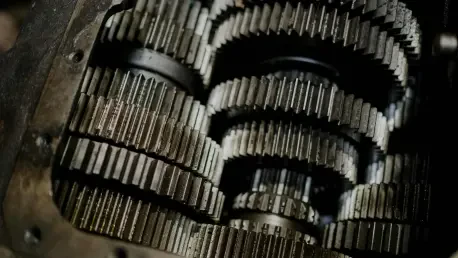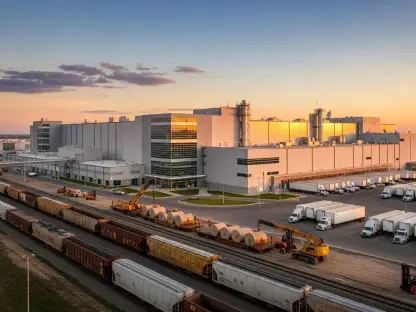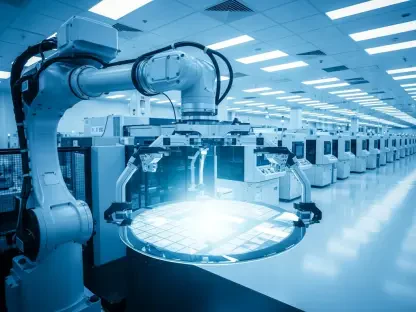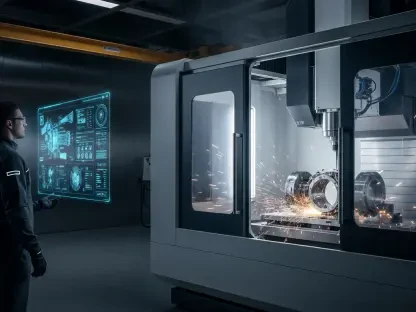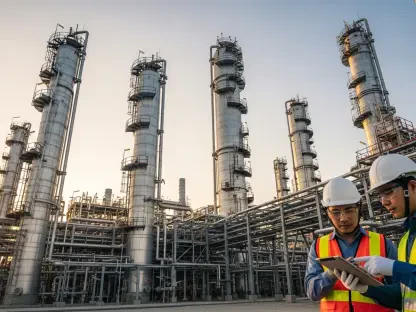Kwame Zaire, a renowned manufacturing expert, has long been a voice of innovation and efficiency in production management. With an astute understanding of predictive maintenance and a passion for quality and safety, Kwame delves into the critical yet often overlooked issues in industrial gearbox maintenance. Today, he shares his insights on contamination control technologies, highlighting how they can transform maintenance practices and equipment reliability.
Can you explain why industrial gearboxes are crucial to manufacturing facilities?
Industrial gearboxes are vital because they are at the heart of converting high-speed input from engines into the high-torque output needed for equipment to operate efficiently. These components are integral across various sectors—from mining to food processing—due to their role in maintaining the operational effectiveness of machinery. Their ability to optimize the working conditions of mechanical systems cannot be overstated.
What are the common causes of premature gearbox failure?
Premature gearbox failure often arises from contamination, both particulate and moisture-related. These contaminants can degrade the lubrication, increase wear and tear, and lead to corrosion. Over time, even minor contamination can escalate into major faults by accelerating component degradation, thus shortening the gearbox’s operational lifespan.
How does contamination affect gearbox performance and equipment reliability?
Contamination directly impacts gearbox performance by degrading lubricants’ effectiveness, causing friction and excessive wear. This decreases reliability and increases the likelihood of unexpected downtime. The presence of contaminants can lead to the deterioration of gear parts, ultimately resulting in costly repairs or replacements.
Could you define particulate contamination and its impact on gearboxes?
Particulate contamination refers to tiny solid particles that find their way into the gearbox, either from external environments or through internal wear and tear. These particles, particularly those the same size as the oil film, can cause abrasive wear on gear surfaces, impairing their function and accelerating failure.
What size particles are most damaging to lubricated machinery, and why are they difficult to filter out?
Particles ranging from 0.5 to 13 microns are the most damaging because they are similar in size to the lubricant film. They are challenging to filter because standard filtration systems often cannot capture particles this small, allowing them to remain in the system and cause wear.
How does moisture contamination enter gearboxes, and what are the consequences?
Moisture enters through breathing processes, where air is exchanged as the system heats and cools. This introduces water vapor, which condenses inside the gearbox. Consequences include reduced lubrication effectiveness, corrosion of components, and accelerated oxidation of oil, all leading to increased wear.
What environments are most susceptible to moisture contamination in gearboxes, and how does it impact maintenance intervals?
Environments with high humidity or frequent washdowns are particularly susceptible to moisture contamination. This can drastically reduce maintenance intervals, sometimes down to as little as 250 hours, due to the higher rate of water ingress and its subsequent detrimental impact on the gearbox.
What role do desiccant breathers play in controlling contamination in gearboxes?
Desiccant breathers are essential for keeping contaminants out by filtering incoming air to remove particles and moisture. Their ability to prevent both water and particulate ingress helps maintain lubricant quality and extends the life of the gearbox significantly.
How has breather technology evolved over time, and what advancements have modern desiccant breathers introduced?
Breather technology has advanced from simple protective measures to highly effective solutions that filter down to 3 microns or less. Modern desiccant breathers incorporate moisture-removal techniques using silica gels, which help capture incoming moisture and maintain a dry atmosphere within the gearbox.
Could you elaborate on how implementing proper breather technology affects maintenance costs and equipment reliability?
Proper breather technology reduces contamination, leading to fewer breakdowns and maintenance requirements. This means fewer part replacements and repairs, lowering overall maintenance costs. Moreover, by improving lubricant longevity and effectiveness, gearboxes operate more reliably and efficiently.
What are the advantages of intelligent breather technology compared to traditional breathers?
Intelligent breather technology offers real-time condition monitoring, predicting breather life, tracking saturation rates, and providing temperature data. This level of sophistication allows for proactive maintenance decisions and better control over contamination management, offering an edge over traditional breathers.
How does real-time monitoring through intelligent breathers enhance contamination control?
Real-time monitoring allows maintenance teams to observe breather status continuously. This ensures timely interventions before problems escalate, enabling teams to respond quickly to contamination events and preventing them from impacting gearbox performance.
What role does temperature data play in intelligent breather technology?
Temperature data provides invaluable insights into gearbox operating conditions. It helps identify overheating issues early on, which, if unchecked, could lead to lubricant breakdown and increased wear. Monitoring temperature allows for adjustments that keep conditions optimal.
How does remote monitoring improve safety in industrial settings?
Remote monitoring minimizes the need for personnel to access potentially hazardous areas for routine checks. This reduces the risks associated with manual inspections, thereby enhancing safety while ensuring timely and effective maintenance actions.
What benefits does remote monitoring offer to maintenance teams?
Remote monitoring provides maintenance teams with immediate access to equipment data, allowing them to prioritize actions based on real-time conditions. This facilitates more efficient resource allocation and reduces unscheduled downtime, ultimately boosting productivity.
How can distributors guide industrial customers in selecting the right breather technology?
Distributors can assist by assessing environmental conditions and gearbox requirements to recommend the most suitable breather technology. They should consider everything from particle filtration needs to moisture control capabilities and ensure the chosen solution aligns with the customer’s operational goals.
What factors should be considered when integrating breather technology into a maintenance program?
Integration requires assessing environmental conditions, understanding the gearbox’s specific contamination challenges, and selecting appropriately sized breathers. It also involves considering the maintenance team’s capacity to handle any additional data provided by more advanced technologies.
How should breather technology be sized and adapted for different gearbox models?
Sizing should reflect the gearbox’s airflow requirements and environmental conditions it operates in. Considering factors like lubrication type and local climate helps select a breather that provides the necessary protection and adapts to the gearbox’s specific demands.
Do you have any advice for our readers?
Investing in the right contamination control technologies is essential, but don’t overlook the importance of ongoing education and training for maintenance teams. Staying informed about the latest technologies and methods ensures facilities can maximize equipment lifespan and reliability amidst constantly evolving industrial challenges.
